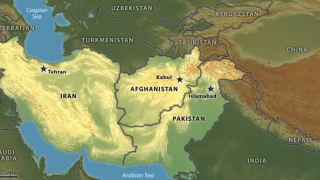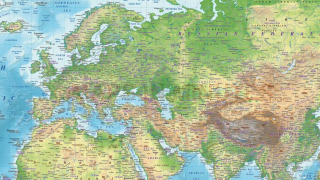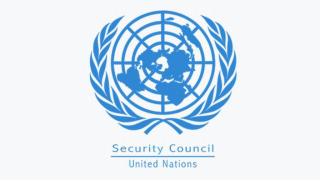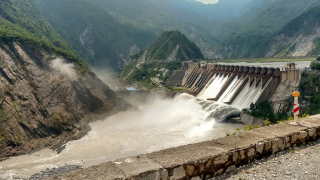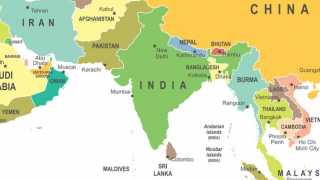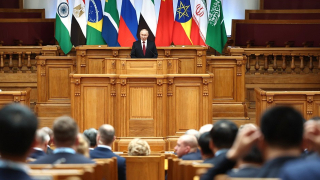Indian Brinkmanship and the Threat of Nuclear Escalation in South Asia
Ever since 1947, Pakistan and India have had three major wars and numerous skirmishes over their longstanding bilateral issues. Presently, the offensive approach adopted by the saffron government of India poses a critical threat to the entire South Asian region. The ongoing antagonism between Pakistan and India can be a fuel for future nuclear war. Both are nuclear powers with modernized nuclear weapons. As per the annual report of Stockholm International Peace Research Institute (SIPRI) in 2018, India possesses 130-140 nuclear warheads while Pakistan possesses 140-150 warheads. These warheads are highly enriched in uranium and may cause a catastrophic effect in the case of nuclear aggression owing to any miscalculation.
According to A. Waqar (Lecturer, Department of Politics and International Relations, University of Westminster), “The combined arsenals of Pakistan and India are small compared to those of the US, Russia or China. Nevertheless, they are more powerful than those dropped on Japan in 1945 and could unleash staggering destruction if deployed on civilian targets. Indeed, even a constrained exchange of warheads between the two nations would, in a split second, be among the most calamitous ever.”Moreover, owing to India’s hegemonic posture and her conventional military superiority Pakistan stands by her nuclear doctrine and has not signed no first use to maintain nuclear deterrence. The chances of nuclear war between Pakistan and India and its spillover effects have worried the international world. It has voiced its concerns over Pak-India contemporary conflict and has shown the fear of a nuclear war between both states.
India’s brinkmanship and her blitzkrieg tactics may not incur a colossal damage to Pakistan and India only, but to the entire region and the world.
The international players have advised both Pakistan and India to be cautious of the impending nuclear threat and to solve their crisis type situation amicably. However, they have not shed light on the actual factors accelerating the Pak-India vulnerability towards nuclear escalation; these factors are US’ nuclear favoritism towards India and the saffronized bellicosity of India. Primarily, the US‘ nuclear deals with India disturbed the regional nuclear balance in the favor of India and helped her exercise her hegemonic hindutva approach. In addition to this, the aggressive and the hostile policies adopted by the BJP (Bharatiya Janata Party) regime have furthered the chances of nuclear escalation. Pakistan tried many a time to nurture peace for only peace can avert war but India kept on pursuing coercive diplomacy which resulted in the recent war like situation. India has recently violated Pakistan’s airspace and marine space, thus, provoking Pakistan to retaliate. Instead of welcoming Pakistan’s yearning for peace and Pakistan’s peace initiative, India resorted to her conventional hostile posture. India’s brinkmanship and her blitzkrieg tactics may not incur a colossal damage to Pakistan and India only, but to the entire region and the world.
Amid Indian Prime minister’s war mongering posture, Prime Minister of Pakistan, Imran Khan, sided by the peaceful approach and released the Indian pilot Wing Commander Abhinandan Varthaman, who violated Pakistan’s airspace. The government of Pakistan released Indian pilot as a peace gesture to lower the bilateral tensions. Prime minister Imran Khan mentioned in his national televised address to the nation on 27th February 2019, “With the weapons you (India) have and the weapons we have, can we afford miscalculation? Shouldn’t we think that if this escalates, what will it lead to?” He further said that both countries need to adopt a prudent approach for war is a result of miscalculation and it is easy to start a war but difficult to end it. Furthermore, US White House National Security Official said, “The risks of further military action by India and Pakistan are unacceptably high, the potential risks associated with further military action by either side are unacceptably high for both countries, their neighbors, and the international community,” the official also said, “The United States is deeply concerned about rising tensions between India and Pakistan and calls on both sides to take immediate steps to de-escalate the situation.”
India must remember the MAD (Mutually Assured Destruction) phenomenon before taking any new step because if the brinkmanship of Indian government leads to a full blown war then the whole world will suffer what Japan had suffered in 1945.
The threat of nuclear escalation between India and Pakistan can only be lowered by adopting the peaceful and a diplomatic approach. Additionally, it has become a responsibility of the international powers to shun the nuclear favoritism and to maintain a nuclear balance -instead of disturbing it- in the South Asian region. Moreover, International checks are to be maintained over the belligerent states aimed at igniting the nuclear fires. Pakistan has played her cards towards averting war by pursuing a peace policy; the ball is in the Indian court now. This time Indian government shall not view the regional politics through the saffron lens for it can cause India the damage intense than the one which the Nazi Germany suffered during and after the Second World War. India must remember the MAD (Mutually Assured Destruction) phenomenon before taking any new step because if the brinkmanship of Indian government leads to a full blown war then the whole world will suffer what Japan had suffered in 1945.




